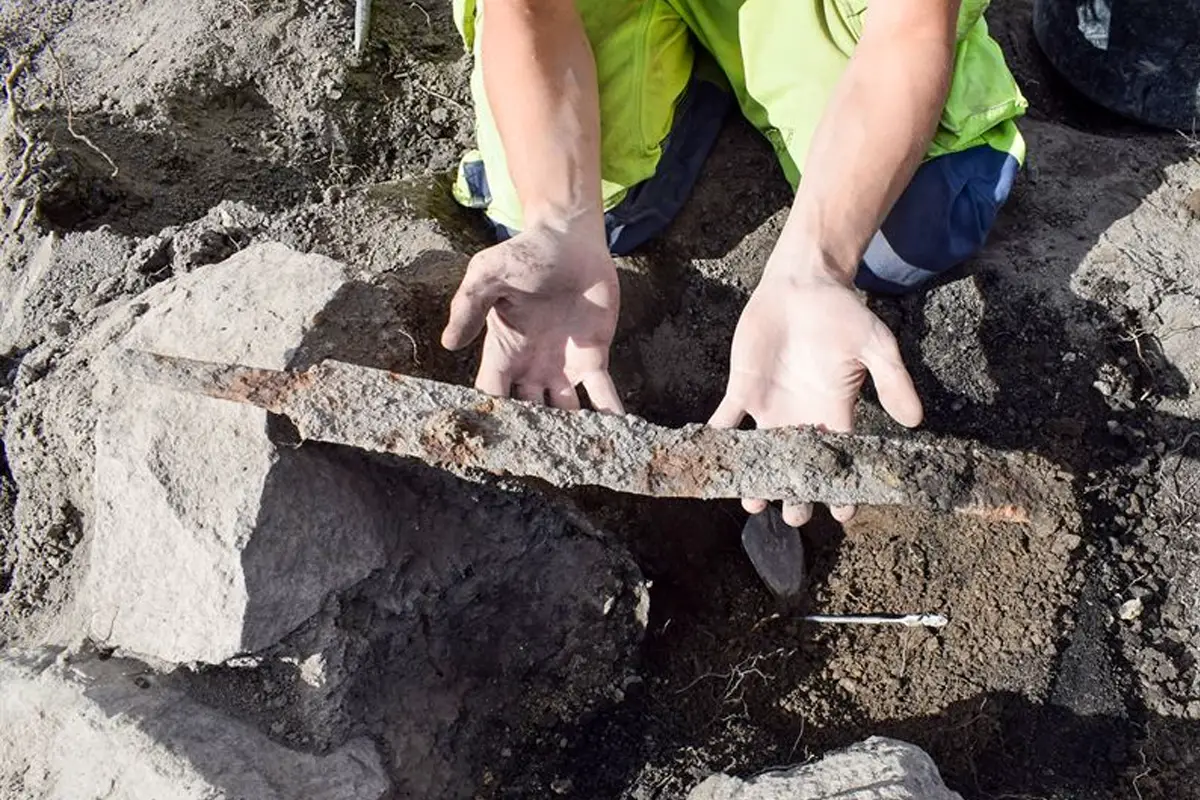A study published by Arkeologerna reveals ornate Viking treasures discovered between 2021 and 2022 during archaeological investigations connected to the motorway expansion near Västerås, Sweden.
Among the most notable treasures found are two standing swords in situ, pearls, gold sheet metal, ceramic vessels, and game pieces made of whalebone and burnt clay.
Excavations have identified nine different sites over the two-year period, including a cremation site, a burial mound, and graves from the late Viking Age.
The cremation site is situated on a hill in Rallsta, where two pyres would have been erected for large funeral gatherings meant to be seen from afar.
The burial mound was discovered in Munktorp parish, consisting of stone settings built into an older Vendel-era burial mound containing a collection of swords. Experts suggest that the mound was reused during the Viking Age either for a dynasty of local elites or a warrior group.

In Sylta, west of Köping, archaeologists investigated a burial site in use from the 9th century until approximately AD 1200.
The site features some of the latest cremations known in Sweden, reflecting a transitional period when Christian burial customs were increasingly replacing older traditions.
In nearly 30 11th-century graves, horses were cremated with their owners, accompanied by decorated, remarkably well-preserved equestrian equipment.
A new book: “People, Meetings and Memories – Archaeology along the E18 in Västmanland” reveals the results of the study, which was funded by the Swedish Transport Administration.
Arkeologerna
Arkeologerna is a Swedish archaeological consultancy with over 100 staff across five offices in Stockholm, Uppsala, Linköping, Lund and Mölndal. Founded in its present form in 2015, their focus is on building knowledge of cultural heritage and making it publicly accessible through scientific publications and outreach.
Header Image Credit : Arkeologerna, Ministry of the Environment
Sources : Arkeologerna





